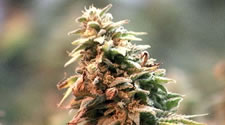 When the United Kingdom announced the historic step of rescheduling cannabis and allowing physicians to prescribe it two months ago, there was concern from patients and advocates as to whether actual herbaceous flower would be allowed, or only extracts. Now the first patient is approved to receive cannabis under the program, and it is indeed to be dried flower. The bad news: with the National Health Service barred by bureaucratic hurdles from providing it, patients are at the mercy of the market—and the price is prohibitive.
When the United Kingdom announced the historic step of rescheduling cannabis and allowing physicians to prescribe it two months ago, there was concern from patients and advocates as to whether actual herbaceous flower would be allowed, or only extracts. Now the first patient is approved to receive cannabis under the program, and it is indeed to be dried flower. The bad news: with the National Health Service barred by bureaucratic hurdles from providing it, patients are at the mercy of the market—and the price is prohibitive.
 In Episode 24 of the CounterVortex podcast, Bill Weinberg notes the historic strides toward liberation of the cannabis plant in 2018, from the fabled four corners of the Earth. Yet under capitalism, every advance also opens new contradictions.
In Episode 24 of the CounterVortex podcast, Bill Weinberg notes the historic strides toward liberation of the cannabis plant in 2018, from the fabled four corners of the Earth. Yet under capitalism, every advance also opens new contradictions.
Recent comments
2 weeks 5 days ago
6 weeks 3 days ago
10 weeks 3 days ago
11 weeks 2 days ago
21 weeks 2 days ago
25 weeks 2 days ago
26 weeks 3 days ago
26 weeks 3 days ago
47 weeks 3 days ago
51 weeks 4 days ago